Q
Is the Ferrari 488 Road legal?
The Ferrari 488 is a road - legal sports car that complies with the road regulations of multiple countries around the world. It can also be legally registered and driven in Malaysia, as long as it passes the local vehicle certification standards (such as certifications from JPJ and SIRIM) and meets the relevant emission and safety requirements. This car is equipped with a 3.9 - liter V8 twin - turbocharged engine, which has strong power output and complies with EU emission standards. Therefore, its compliance in Malaysia mainly depends on whether the taxes are paid and modification adjustments (such as right - hand drive conversion) are completed during import.
For car enthusiasts in Malaysia, it should be noted that the maintenance cost of buying this kind of high - performance sports car is relatively high. In particular, original parts and professional maintenance services need to be obtained through official Ferrari channels. In addition, the climate in Malaysia is hot and humid. It is recommended that car owners regularly check the tires and cooling system to ensure the vehicle's performance in the tropical environment.
If the budget is limited, you can also consider the used car market. However, it is essential to confirm the vehicle's complete certification documents and maintenance records to avoid subsequent legal or technical problems.
Special Disclaimer: This content is published by users and does not represent the views or position of PCauto.
Related Q&A
Q
What is the top model of Ferrari 488?
The top model of the Ferrari 488 series is the 488 Pista. This model was launched in 2018. As a high - performance version of the 488 GTB, its name "Pista" means "track" in Italian, fully reflecting its track - oriented design concept.
The 488 Pista is equipped with a 3.9 - liter V8 twin - turbocharged engine. The maximum output power reaches 720 horsepower, and the peak torque is 770 N·m. It can accelerate from 0 to 100 km/h in just 2.85 seconds, and the top speed can reach 340 km/h. Its performance is extremely strong.
This car has been significantly optimized in terms of aerodynamics and lightweight. For example, it adopts a more aggressive front and rear bumper design, makes extensive use of carbon fiber materials, and simplifies the interior. As a result, the overall weight of the vehicle is about 90 kg lighter than that of the 488 GTB.
For car enthusiasts in Malaysia, the 488 Pista is a very rare super - car. Its limited - production status and ultimate performance make it a dream car for collectors and performance enthusiasts. It's worth mentioning that the Ferrari 488 series was replaced by the F8 Tributo in 2019, but the 488 Pista is still regarded as a classic among Ferrari's mid - engined V8 models. Its technology and design concept have also influenced the development of subsequent models.
Q
Why are Ferrari 458 so expensive?
There are mainly several reasons why the Ferrari 458 is so expensive. First of all, it's the brand value. As a top - notch sports car brand, Ferrari has a long history and a strong racing heritage. This endows its models with extremely high collectible value and room for price premiums.
Secondly, the 458 incorporates a large number of cutting - edge technologies. For example, its 4.5 - liter V8 naturally aspirated engine can deliver 570 horsepower. Paired with a 7 - speed dual - clutch transmission, it can accelerate from 0 to 100 km/h in just 3.4 seconds. Such performance is still remarkable even today.
Moreover, the 458 was designed by Pininfarina. Its appearance is highly recognizable and full of Italian aesthetic style. The interior materials and workmanship are of the top - level standard.
In addition, Ferrari's production volume is limited. During its production from 2010 to 2015, only about 30,000 units of the 458 were produced globally. This scarcity further drives up the price. For car enthusiasts in Malaysia, factors such as import duties and luxury taxes also need to be taken into account, which will significantly increase the final selling price.
It's worth mentioning that the 458, as the last mid - engined V8 Ferrari with a naturally aspirated engine, holds a special place in the hearts of car enthusiasts. This is also an important reason for its good resale value. With the trend of electrification, this kind of high - performance pure - fuel sports cars may become even more precious in the future.
Q
When was the Ferrari 488 discontinued?
The Ferrari 488 officially ceased production in 2020. As a classic model in Ferrari's mid - engined V8 sports car series, it made its debut in 2015, replacing the previous 458 Italia. Its successor, the F8 Tributo, was launched in 2019 and gradually took over its market position. The 488 series includes the 488 GTB, 488 Spider, and the high - performance version 488 Pista. It is equipped with a 3.9 - liter twin - turbocharged V8 engine, with a maximum output power of up to 720 horsepower (in the Pista version), making it one of Ferrari's important representative works in turbocharging technology. For car enthusiasts in Malaysia, there is still a certain number of 488s in the local market. Some used cars or display cars may still be available for purchase through authorized dealers or professional channels. In addition, the discontinuation of the 488 also marks that Ferrari's V8 models have entered a new stage. Subsequent models such as the F8 Tributo and SF90 Stradale further integrate hybrid technology and aerodynamic innovations, continuing the brand's leading position in performance and technology.
Q
Who is the rival of the Ferrari 488?
The main competitors of the Ferrari 488 include supercars such as the Lamborghini Huracán, McLaren 720S, and Porsche 911 Turbo S. These models are on the same level as the 488 in terms of performance, design, and brand influence. The Lamborghini Huracán is well - known for its aggressive appearance and V10 engine. The McLaren 720S has become a strong competitor to the 488 with its lightweight carbon - fiber structure and powerful performance. The Porsche 911 Turbo S is famous for its excellent daily driving comfort and all - wheel drive system.
In the Malaysian market, these models are also highly sought after by high - performance car enthusiasts. The local hot climate and diverse road conditions pose higher requirements for the cooling systems and suspension tuning of supercars. Therefore, special attention should be paid to their adaptability when choosing such models. Additionally, the high automotive taxes in Malaysia will significantly increase the selling prices of these imported supercars. However, their rarity and outstanding performance still attract many collectors and car fans.
Q
Which is faster, Ferrari 488 or Lamborghini Huracan?
Both the Ferrari 488 and the Lamborghini Huracán are top - notch supercars, but their performance varies slightly. The Ferrari 488 is equipped with a 3.9 - liter V8 twin - turbocharged engine. It has a maximum horsepower of 670, can accelerate from 0 to 100 km/h in just 3 seconds, and has a top speed of 330 km/h. The Lamborghini Huracán, on the other hand, features a 5.2 - liter V10 naturally aspirated engine. The standard version has 610 horsepower, can accelerate from 0 to 100 km/h in 3.2 seconds, and has a top speed of 325 km/h. Based on the data, the Ferrari 488 has a slight edge in acceleration and top speed. However, the actual driving experience also depends on factors such as the vehicle's tuning, weight distribution, and driving environment. In the tropical climate of Malaysia, turbocharged engines might be affected by high temperatures, while the linear power output of naturally aspirated engines could be more suitable for some drivers. Both cars represent the pinnacle of Italian supercar craftsmanship. The choice between them largely depends on personal preference, whether it's the pursuit of ultimate speed or a unique driving experience. It's worth noting that Malaysia's road conditions and tax policies for high - performance cars also impact the actual usage experience of car owners.
Q
How much does it cost to maintain a Ferrari 488?
In Malaysia, the average annual cost of maintaining a Ferrari 488 is approximately between RM50,000 and RM100,000. The specific cost depends on the vehicle's usage frequency and maintenance items. Routine maintenance such as oil changes and filter replacements typically costs around RM5,000 to RM8,000 each time. More complex services like gearbox inspections or brake system maintenance can cost as much as RM15,000 to RM30,000. Tire replacement is also a significant expense. A set of high - performance tires usually costs around RM20,000 to RM40,000.
In addition, as a high - end brand, Ferrari recommends that owners go to the official authorized service centers for maintenance to ensure professionalism and the use of original parts. Although the cost is relatively high, it can guarantee the long - term performance and resale value of the vehicle. For potential buyers, insurance costs also need to be considered. The annual insurance premium for such supercars may exceed RM30,000, depending on the driving record and insurance coverage.
After understanding these costs, owners can better plan their budgets. It is also advisable to conduct regular maintenance to avoid higher repair costs. After all, a well - maintained Ferrari not only provides an excellent driving experience but also retains a high value when resold.
Q
Is the Ferrari 488 reliable?
As a high-performance sports car, the Ferrari 488 generally meets its positioning in terms of reliability. However, attention should be paid to the impact of maintenance costs and the usage environment on the vehicle. The 3.9-liter V8 twin-turbocharged engine installed in the 488 is powerful and the technology is mature. But the precise structure of the high-performance engine means that maintenance must be carried out strictly in accordance with the manufacturer's recommendations, especially the regular inspection of the turbo system and the gearbox. In the hot and humid climate of Malaysia, it is recommended to replace the coolant and engine oil more frequently, and pay attention to the moisture-proof treatment of the electronic system to avoid potential problems caused by high temperature and humidity. Compared with ordinary family cars, the replacement cost of high-performance components such as the suspension system and carbon-ceramic brake discs of supercars is relatively high, which is a factor to be considered before purchase. If the car is used on urban roads in Malaysia for a long time, frequent low-speed stops and starts may increase the wear and tear of the clutch. It is recommended to conduct regular computer diagnostics. Among models in the same class, the reliability of the 488 is at the mainstream level. However, the design of supercars focuses more on performance rather than durability, so owners need to have reasonable expectations. For owners who pursue the ultimate driving experience, the 488 is still a worthy option. It is recommended to purchase through official channels and strictly follow the maintenance plan to ensure the best condition.
Q
When did they stop making the Ferrari 488?
The production of the Ferrari 488 officially ended in 2019, and it was then succeeded by the Ferrari F8 Tributo, which serves as the new - generation model in the brand's mid - engine V8 sports car series. The 488 made its debut in 2015, equipped with a 3.9 - liter twin - turbocharged V8 engine with a maximum power of 670 horsepower. It became one of the top - performing models in its class at that time and was deeply loved by car enthusiasts in Malaysia.
Its successor, the F8 Tributo, is further optimized in terms of power and aerodynamics. The maximum power has been increased to 720 horsepower, while retaining the classic design elements of the 488. For Malaysian consumers, the 488 is still highly sought after in the second - hand market, especially for its excellent driving experience and the iconic Ferrari engine sound. The launch of the F8 Tributo provides more options for car enthusiasts who pursue the latest technology.
Both the 488 and the F8 Tributo reflect Ferrari's outstanding pursuit of performance and craftsmanship, meeting the needs of Malaysian high - performance car enthusiasts.
Q
How to put a Ferrari 488 in park?
To put the Ferrari 488 into Park, first make sure the vehicle has come to a complete stop. Then, press and hold the brake pedal. Next, press the "P" button on the center console to activate the electronic parking system. At this time, the transmission will lock, and the "P" gear indicator will appear on the dashboard. It should be noted that the Ferrari 488 is equipped with a dual - clutch transmission (F1 DCT) and doesn't have the traditional mechanical gear lever of an automatic transmission. All gear - shifting operations are done through electronic buttons or paddles. Therefore, when parking, there's no need to shift gears like in traditional models; just press the "P" button.
For Malaysian owners, when parking a super - car for a long time in the hot and rainy climate, it is recommended to activate the electronic handbrake (if available) on a flat surface and avoid long - term exposure to the sun to protect the transmission and electronic systems. In addition, the transmission of high - performance models like Ferrari is designed to focus more on track performance. During daily driving, it is advisable to come to a complete stop before shifting into Park to avoid unnecessary load on the transmission system. If you encounter a situation where you can't shift gears, it may be that the electronic system needs to be restarted or checked. In this case, you can try turning off the vehicle and restarting it.
Q
What's better, Ferrari 458 or 488?
Both the Ferrari 458 and 488 are outstanding supercars, yet they are designed for different driving needs and eras. The 458 is equipped with a 4.5 - liter naturally - aspirated V8 engine, offering more direct throttle response and a classic high - revving engine sound, which is perfect for car enthusiasts who pursue pure driving pleasure. On the other hand, the 488 features a 3.9 - liter twin - turbocharged V8 engine. It has stronger power and earlier torque delivery, with a 0 - 100km/h acceleration time of just 3 seconds, making it more suitable for buyers who seek ultimate performance.
In the hot climate of Malaysia, the turbo system of the 488 may be more adaptable to low - speed driving, but the naturally - aspirated engine of the 458 is more charming at high revs. Both cars are equipped with Ferrari's top - notch chassis tuning. The 458 has more mechanical and direct steering feedback, while the 488 focuses more on daily driving comfort. Considering the road conditions in Malaysia, the 488 might be more suitable for daily use, but the 458 has a higher collectible value.
These two cars represent the pinnacle of Ferrari's mid - mounted V8 engines. The choice depends on whether you prefer the classic naturally - aspirated experience or the modern turbocharged one.
Latest Q&A
Q
What kind of oil does 2018 Passat use?
For the 2018 Volkswagen Passat in Malaysia, the recommended oil specs typically call for synthetic oils that meet VW 502 00 or VW 504 00 standards, with viscosity grades of 5W-30 or 5W-40 being the go-to choices. Your final pick should really depend on your actual driving conditions and habits though – here in Malaysia's hot climate, for example, 5W-40 might be the better bet thanks to its stronger high-temperature protection.
Sticking to regular oil changes is huge for keeping your engine running strong long-term. As a general rule, aim to change it every 10,000 kilometers or 12 months, whichever comes first. Also, when you're picking out oil, always double-check that it has international certifications like API SN or ACEA A3/B4 – that's your guarantee of reliable quality.
If your Passat has a diesel engine or is a high-performance variant, it might need a specific oil type, so your best move is to check the owner's manual or have a chat with an authorized service center. It's also handy to know what those oil numbers mean – "5W" tells you about cold-weather flow, while "40" refers to hot-temperature thickness. A little knowledge here goes a long way in helping you make the smartest choice for your car.
Q
Does a 2018 Volkswagen Passat have a turbo?
The 2018 Volkswagen Passat in Malaysia does come with a turbocharged engine, specifically a 1.8-liter TSI turbocharged petrol unit. This engine pushes out 180 horsepower and 250 Nm of torque, and it's a solid combo of turbo tech and direct injection that delivers great power while still being kind on fuel – perfect for both city commuting and those longer highway drives we Malaysians love. Turbocharging works by compressing the intake air, which boosts engine efficiency and power, so you get plenty of torque even at low revs, making acceleration feel smooth and effortless.
On top of that, the 2018 Passat also gets VW's DSG dual-clutch gearbox, which really sharpens up the shifts and makes the whole driving experience that much more engaging. For Malaysian buyers, a turbo engine isn't just about daily driving needs; it also gives you that extra oomph for confident overtaking on the highway. And let's not forget, Volkswagen's reputation for reliability and their widespread after-sales network here mean owning one is pretty hassle-free.
If turbo tech has caught your interest, it's worth checking out turbo models from other brands like Toyota or Honda too – each has their own engineering twists. But when it comes to balancing power and fuel efficiency, VW's TSI engines really stand out from the pack.
Q
Are there any recalls on a 2018 VW Passat?
For the record, the 2018 Volkswagen Passat was subject to safety-related recalls in certain markets. In North America, for instance, a recall was issued due to a potential fault in the fuel pump control unit that could lead to stalling. As for the Malaysian market, it's best to refer to official Volkswagen announcements there. We recommend owners check via the recall inquiry page on Volkswagen Malaysia's website by entering their Vehicle Identification Number (VIN) or contact an authorized service center directly, as recall situations can vary by region based on local regulations and vehicle specifications.
Staying on top of recall information is a key part of vehicle maintenance, especially for updates involving critical components like airbags, fuel systems, or electronic stability programs. Even if your Passat isn't part of a recall, sticking to the manufacturer's maintenance schedule is crucial to keep it running at its best. For more details on common upkeep points specific to the Passat—think DSG transmission care or turbocharged engine maintenance tips—reaching out to local Volkswagen technicians is the way to go for personalized advice.
Q
What is the fuel consumption of the 2018 Volkswagen Passat?
The 2018 Volkswagen Passat's fuel economy in the Malaysian market varies depending on the powertrain. The 1.8-liter TSI turbocharged engine variant delivers a combined fuel consumption of around 6.5 liters per 100 kilometers, while the 2.0-liter TSI model is slightly thirstier at approximately 7.2 liters per 100 kilometers. Real-world figures, of course, can fluctuate based on driving habits, road conditions, and maintenance upkeep.
Riding on Volkswagen Group's proven MQB platform and paired with a DSG dual-clutch transmission, this model strikes a nice balance between power delivery and fuel efficiency – ideal for both city commutes and highway stretches across Malaysia. It's worth highlighting how turbocharging technology effectively boosts performance from smaller-displacement engines while keeping fuel consumption relatively low, a trend we've seen increasingly adopted in mid-size sedans here in the local market.
To keep your Passat running at its most efficient, regular maintenance is key. Make sure to replace the air filter and spark plugs as scheduled, and always use engine oil that meets the manufacturer's specifications. These simple steps go a long way in preserving optimal fuel economy over time.
If you're in the market for a used Passat, do yourself a favor and check the complete service history through official channels. It's the best way to ensure the vehicle still performs as well as it did when it left the factory.
Q
Why is my 2018 Passat not starting?
There are a few common reasons why your 2018 Passat might be refusing to start. First up, battery issues. Malaysia's hot and humid climate can really take a toll on battery life, so it's worth checking if the voltage has dropped below 12.4 volts or if the terminals are looking corroded.
Next, a faulty starter motor or alternator could be the culprit – both can leave you short on electrical power. Don't rule out fuel system problems either, like a busted fuel pump or a clogged fuel filter. These tend to happen more often if you've been using low-quality petrol regularly.
Then there's the ignition system; worn spark plugs or a dodgy ignition coil can definitely make starting a hassle. If your Passat has a smart key, don't forget to check if the key fob battery is dead, which might stop the car from recognizing it.
If any warning lights are flashing on the dashboard – especially the check engine light – hook up an OBD scanner to read the trouble codes as soon as you can. For regular maintenance, swap out the battery every 2-3 years, stick to the recommended fuel grade, and replace the spark plugs around every 60,000 kilometers. These simple steps can go a long way in preventing starting headaches. If you've checked all this and still can't get it going, best to reach out to an authorized service center for a professional diagnosis.
View MoreRelated News

Ferrari unveils the chassis and core components of its first all-electric model, Elettrica
LienOct 10, 2025

Ferrari 849 Testarossa officially released, succeeding the SF90 Stradale with more powerful performance
RobertSep 12, 2025
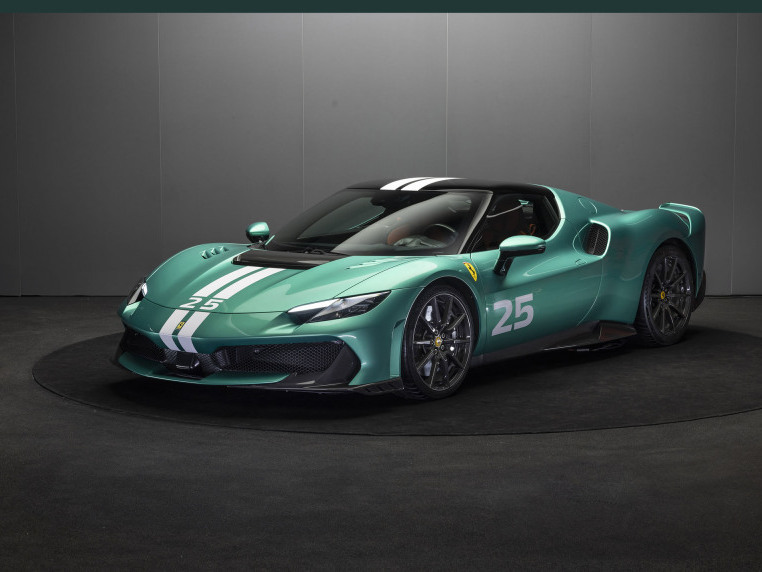
Ferrari Unveils 296 Speciale Plug-in Hybrid Supercar, Accelerating from 0-100 km/h in Just 2.8s
JohnApr 30, 2025
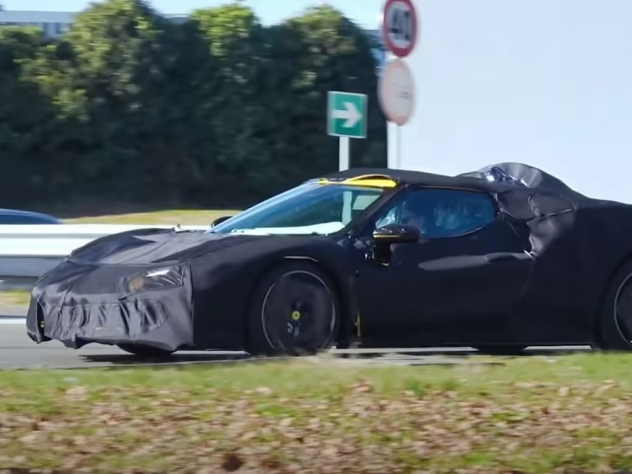
Meet Ferrari's New Track Beast: 296 VS Debuts on April 29
RobertApr 3, 2025
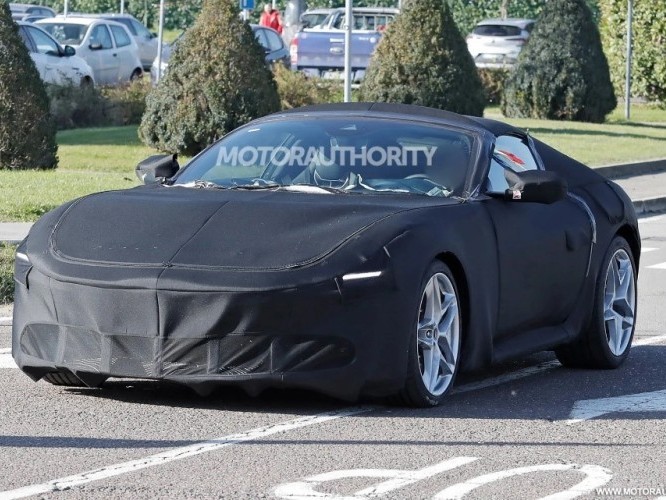
Spy shots of the Ferrari Roma successor revealed! May be released by the end of 2025, Hybrid system could be the highlight
WilliamNov 19, 2024
View More












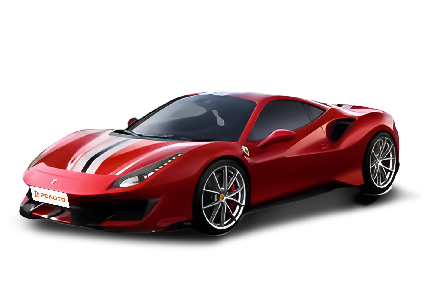



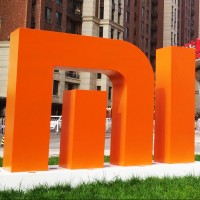

Pros
Cons